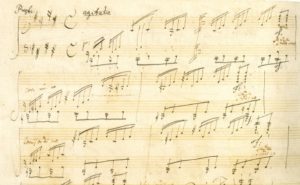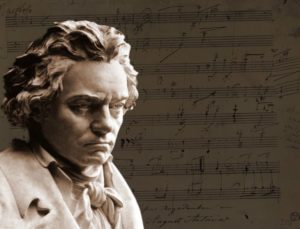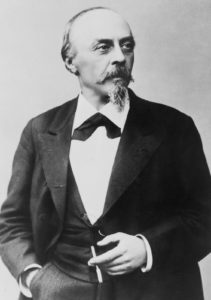intense, immersive, impassioned, hugely demanding and hugely enriching
Jonathan Biss, pianist
It’s the single most humane music imaginable
Igor Levit, pianist
Somewhere in the world right now, as I write, a pianist is performing or recording the Beethoven Piano Sonatas, maybe just a select handful of them, maybe all 32 in a crazy, Herculean marathon of music and emotion. At London’s Wigmore Hall alone, the past three years have seen cycles by Igor Levit, Llyr Williams and Jonathan Biss (currently). In autumn 2019, Igor Levit released his recording of the complete sonatas; Jonathan Biss will release his final Beethoven CD this year, the conclusion of his personal vision of these sonatas. These are just a select few of the many pianists who feel compelled to perform and record “the 32”, the most comprehensive single body of Beethoven’s output.

3rd movement of Moonlight Sonata
Each generation brings a fresh crop of pianists willing to rise to the challenge of this music, from the pre-war recordings by Arthur Schnabel, with their fistfuls of wrong notes, which can give comfort to the keen amateur, to those of Wilhelm Kempff, Friedrich Gulda, Daniel Barenboim, Alfred Brendel, Vladimir Ashkenazy, Maurizio Pollini, Steven Kovacevich, Andras Schiff, Ronald Brautigam (on period instruments), Jean-Efflam Bavouzet, Paul Lewis, Igor Levit…. the list of illustrious names goes on and on. (As a teenager, my prized possessions, along with a three-volume crimson clothbound edition of the complete sonatas, were my LPs of British pianist John Lill playing these sonatas.)
The compulsion to play and record this music, combined with, more often than not, a fair degree of reverence, is very much alive and well. Yet today it seems a curious, almost anachronistic act, which harks back to the sort of enforced serious music appreciation of the latter part of the nineteenth century, and something which would have probably amused and surprised Beethoven, since hardly a single movement of his sonatas was performed to a paying audience in the concert format as we understand it today. Felix Mendelssohn performed the entire ‘Moonlight’ Sonata in a public concert in the 1830s, and Franz Liszt, the greatest pianist of his age, played the supposedly unplayable ‘Hammerklavier’ for an invited audience in Paris, but he only played two of the sonata’s four movements when he next performed it, perhaps concluding that the audience did not wish to sit through the entire work!

Beethoven
The pianist and conductor Hans von Bülow was the first to perform Beethoven’s piano sonatas in a single concert (the last five in 1878), declaring that “Berlin must have sunk very low if it cannot listen to my reading of Beethoven’s complete testament”. It was von Bülow who called the 32 Piano Sonatas the “New Testament” of the piano repertoire, thereby setting works, which were originally mostly composed for private study and domestic performance, on a high pedestal of veneration. Von Bülow often used religious rhetoric in relation to music, and his concerts were serious, didactic affairs, proclamations of “musical gospel” to the “congregation” of the audience. This created a quasi-religious veneration of Beethoven’s music, and specifically the 32, and this aura of reverence around the piano sonatas remains today.
Initially hard to sell, by the late 1880s von Bülow had launched and was touring with a four-concert Beethoven cycle. In the 1920s and early 1930s, Artur Schnabel was performing sonata cycles in Europe and the US, and in 1932 HMV launched the Beethoven Sonata Society through which subscribers could purchase Artur Schnabel’s recordings of the piano sonatas. He was the first pianist to record the complete sonatas, a monumental feat in itself given the limitations of the technology at the time. Schnabel was one of the pre-eminent Beethoven interpreters on record, and his performances remain highly prized for their simplicity of approach and his anti-virtuoso nature, which reveal the essence of this music. The critic Harold Schonberg called Schnabel “The Man Who Invented Beethoven”, and his recordings and performances brought the piano sonatas to a wider audience at a time when they were not that well-known or admired. It was Schnabel who also described this music as “better than can be played”, thus contributing to the cult, almost mythic status of the 32.
Beethoven: Piano Sonata No. 8 in C Minor, Op. 13, “Pathétique” – I. Grave – Allegro di molto e con brio (Artur Schnabel, piano)

Hans von Bülow
Today, this music continues to enjoy an elevated stature which goes far beyond the notes on the score, and despite some relaxation in the rituals and etiquette of classical concerts, the 32 are regularly presented in an atmosphere of awed reverence. Any pianist who takes on this colossal challenge enjoys special respect: not only is this music physically and psychologically demanding, but the hand of history, tradition and expectation weighs heavily upon their shoulder.
There’s something seductive about this process of really going to your limit with this music.
Jonathan Biss
For the completest – both performer and listener – the 32 provide a significant opportunity to explore their composer’s output across three distinct periods of his career and to be immersed in repertoire on a grand scale (the complete cycle comes in at around 11 hours of music – one or two pianists have performed all 32 sonatas in a single day, a feat of stamina and perhaps a performance stunt too…. it’s more usual to hear a complete cycle over the course of 8 concerts). For any pianist embarking on this great journey, the experience is fascinating, frustrating, uplifting, intense and absorbing. This is music which places one face to face not only with Beethoven’s genius but also the sheer force of his personality. He’s stubborn, explosive, intimate, witty, rhetorical, angry, forbidding, despairing, joyful, his humanity evident in every phrase, his innermost feelings expressed with a startling lucidity. It is this, amongst other things, which makes his music so remarkable, inspiring and shocking. It is this too which allows so many pianists to bring their personality to this music, presenting his emotions through the prism of their own life experience and bringing a fresh perspective on this music every time it is performed or recorded.
He’s also incredibly precise in his writing and every marking and direction must be understood in its context: why, for example, does he differentiate between different kinds of staccato, or place a crescendo over a single note (a physical impossibility for the pianist!)? Yet he also leaves plenty open to one’s own interpretation and personal vision. In this respect, his music embodies the maxim “through discipline comes freedom”: it demands a laser-like focus and total abandon.
Beethoven never wants us to be in any doubt about what he is saying. Even when he asks the pianist to create an illusion……….the intention behind the sound, and the message it conveys, remains clear.
Paul Lewis, pianist
Beethoven: Piano Sonata No. 32 in C Minor, Op. 111 – II. Arietta: Adagio molto semplice e cantabile (Paul Lewis, piano)
Playing the 32, your ego is constantly being tested because this is music which is bigger than you are. To meet a Beethoven sonata head-on, it stops being about you, how fast you can play, how technically accomplished you are. It is about getting beyond yourself, becoming ego-less, humble before the greatness of the music, trying to get so far under the composer’s skin that Beethoven’s ideas became your own. As one layer is uncovered, so another presents itself; the summit of this music is always just out of reach. There is no sense of a final arrival, an end to the journey with this music, and this is what makes it so endlessly fascinating for players and audiences alike.
These sonatas speak of fundamentals: the meaning of life and shared values. And so when sharing the music with others, you are debating, with the audience, what it means to be alive, to be human – those basic philosophical questions of Beethoven’s time which remain with us today. With Beethoven there is always a life beyond the mundane and the whole universe could be contained in a single sonata.
whatever your connection with these works, their infinite scope will never fail to reward, overwhelm and inspire
Paul Lewis

I am an amateur, a technician, CEO of an IT company. I was. Now I am retired. When I became retired I formed a wish which was based on a misconception of my youth. I was mocking myself about adult persons who claimed “Beethoven is the greatest, there is no other real composer later than him.” I thought those people were dumbheads. When I was around 15 years I had played most of all orchestra pieces that had been transcribed for piano for four hands. From Händel, Haydn, Mozart, Beethoven, Schubert, Brahms, Bruckner, Mahler, symphonies and chamber music like string quartets. And I had liked many composers, most of all probably Schubert.
But I also liked Beethoven. When I went to retirement in 2016, I had played around 8 sonatas of Beethoven in public performances for relatives, friends and additional audience of people unknown to me. Finally I had time to practice, time that was not interrupted by 180 days business travels without the possibility to play or even practice piano.
But I did like Beethoven. So I decided to go for playing all 32 sonatas in public recitals. I granted myself a time of 14 years. I hope that I will still be able to play at the age of 80. Generally, there is no need to hurry. It is strange however, that the performance of the Appassionata has already been made impossible at the planned date. Three years ago I had an accident and had to stay 3 months in hospital. (No harm done. Breaking pelvis and getting a new hip, but fingers were ok, brains were ok and I could manage the pedaling.)
No I practiced the Appassionata again for a recital on May 12, concert hall already reserved. But the Corona-Virus will prohibit traveling. So I have to postpone again. However, now I have endless patience. The concert program would have been Appassionata and opus 2/3, but this will stay. I will not “unlearn” it, by neglecting it now. As to relax with another composer I am re-practicing Moussorgsky, pictures at an exhibition, which I had performed 9 years ago for my 60th birthday.
My relation with Beethoven has changed considerably. While I could play some of the sonatas earlier (Waldstein, opus 111, opus 109), there was not such a deep connection as I have now. Partially, my understanding was considerably enhanced by a pianist who is mentioned in the article. It is Jonathan Biss who gave video lectures about Beethoven sonatas. The lectures were directed to “listeners” not to piano players. But they have proved very relevant for me.
I have now three “big sonatas” ahead of me. Opus 101, Opus 110, Les Adieux and the Hammerklavier. I have allocated three years for practicing the Hammerklavier and one year for opus 110 and opus 101. <
Now comes the most important message: I don't play it to gain fame, it is not my profession, but spending enough time to practice it for public performance, has given me a much deeper insight into those sonatas than I could have imagined. I perform in Belgrade in a sort of missionary activity, because you can not even buy scores for classical music in Belgrade. Otherwise I play in various smaller halls in Vienna or near Vienna.
As I wrote I do not play for fame. But I get my rewards. After my last recital in November there were two people who told me always the same: your are not a piano player, you play like an artist. I like that. I should add that since 8 months ago I have a piano teacher, who is a pianist and a composer. And now Beethoven has gained even a deeper importance.
And I totally agree with Paul Lewis!
Thank you for this! Please note that the Alsatian pianist Marie Jaëll (1846-1925) performed the complete sonatas in Paris in 1893 in six recitals.